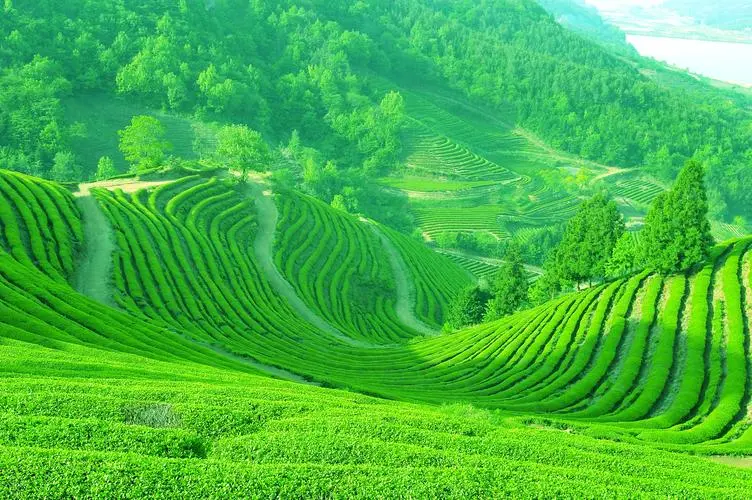In tea tree planting, scientific and efficient planting techniques can improve the quality and yield of tea, and increase the economic income of tea farmers. With the widespread application of sensor technology and Internet of Things technology in the agricultural field, researchers have begun to monitor tea garden environmental information through information technology.

A tea garden monitoring system based on a low-power wide area Internet of Things cloud platform was designed for remote and real-time monitoring of tea gardens. Solar power generation has been introduced to address the remote location of tea gardens, and a solar power generation system has been designed to solve power supply problems on site; In order to achieve stable and reliable data transmission in complex tea garden environments, a local area network is built using LoRa communication modules with strong anti-interference and penetration capabilities, and 4G Cat1 modules are used to transmit data packets to cloud servers; Utilizing IoT technology to remotely control irrigation devices, in order to avoid the ineffective traditional extensive irrigation methods and waste of water resources, and improve the utilization rate of water resources.
The tea garden monitoring system includes a physical control layer, a network service layer, and a terminal application layer. The physical control layer includes environmental parameter collection sub nodes, main nodes, and photovoltaic power generation systems. The sub node collects parameters such as air temperature and humidity, soil temperature and humidity, and photovoltaic module temperature in the tea garden to the main node through sensors. In order to more intuitively grasp the growth of tea trees, a video module is introduced to monitor the tea garden. The data transmission between the sub nodes and the main node is carried out through the LoRa communication chip. The main node summarizes the data of each sub node and uploads it to the 4G Cat1 base station using the 4G Cat1 communication module, and then sends the data to the cloud platform. The photovoltaic power generation system utilizes the abundant solar energy in tea gardens to generate electricity, and outputs different voltages through voltage conversion modules to supply power to sensors, microcontrollers, data transmission modules, and irrigation devices.
In the network service layer, 4G Cat1 base stations directly exchange data with cloud platform servers, which store, process, and forward data, and provide request services for end users.
The terminal application layer provides a visual interface to display real-time and historical data on site, as well as control the executing agencies on site, achieving the goal of scientific and efficient management of tea gardens.
The function of the physical control layer is to collect parameters such as air temperature and humidity, soil temperature and humidity, and photovoltaic panel temperature in the tea garden environment, and upload them to the cloud server. Based on the control signals issued by the cloud server, corresponding operations are made on the executing agency.
In response to the remote location of tea gardens and the weak construction of power facilities, a water-cooled circular solar power generation system has been designed to improve power generation efficiency and solve the power supply problem of tea gardens by locally absorbing solar energy. To ensure the stability of the photovoltaic system power supply and reduce the development cost of the water-cooled cycle photovoltaic power generation system, wired centralized power supply is adopted. The photovoltaic power generation system located in the center of the tea garden supplies power to each node module and irrigation device.
The experiment uses STM32F103CBT6 chip, 128kB Flash and 20kB RAM, with good processing performance and abundant peripheral resources to meet the system requirements.
The physical control layer is the bottom layer of the monitoring system, and sensors are the core components of the physical control layer. The operational status of the system depends on the environmental data collected by the sensors. The selection of sensors needs to consider the range, accuracy, and the impact of temperature and humidity in the tea garden.
Due to the growth characteristics of tea trees that favor temperature, humidity, and shade, tea gardens are usually built with the standard of equal height terraces and dense planting, resulting in a complex tea garden environment. So a hybrid communication method of LoRa+4G Cat1 is used in the tea garden. LoRa has the advantages of long transmission distance, low transmission power consumption, and strong anti-interference; 4G Cat1 has advantages such as strong links, high coverage, good compatibility, and good development prospects.
The workflow of the physical control layer is that after the initialization of the collection terminal is completed, the STM32 microcontroller enters sleep mode and waits for the timer to interrupt and wake up. After the timer issues an instruction, the STM32 microcontroller exits sleep mode, collects tea garden environmental data, sends the collected information to the communication module, and then enters sleep mode. If the control command is received, the STM32 microcontroller immediately exits sleep mode, and the controller sends a control command to open the irrigation valve. After execution, it enters sleep mode.
This experimental cloud platform selects a transparent cloud management system that supports 4G Cat1, mainly including modules such as monitoring center, data management, device management, configuration management, camera management, and mobile terminal.
In order to achieve mobile monitoring of the tea garden monitoring system, a WeChat mini program on the cloud platform has been developed. This mini program achieves full integration with PC data, and can query the data changes of each data node and receive alarm information and video monitoring.
The photovoltaic power supply system testing and communication testing can meet the requirements. The main monitoring parameters of the monitoring system testing article are air temperature and soil temperature and humidity. During the testing process, the system operates stably and reliably, meeting the management needs of modern agriculture.
In response to the low modernization of tea plantation cultivation, a tea plantation monitoring system based on a low-power wide area Internet of Things cloud platform was designed. The system collects tea plantation environmental parameters through sensors and uses LoRa and 4G Cat1 communication modules to transmit data to the cloud platform and database, providing a data foundation for later analysis. At the same time, develop WeChat mini programs for mobile devices to achieve data integration with PC devices. The system is also equipped with control devices to remotely monitor the environmental parameters of tea gardens, ensuring optimal growth of tea trees and promoting the development of tea plantation towards intelligence and informatization.
Contact: Qui
Phone: 18146178586
Tel: 18146178586
Email: qui@zonewu.com
Add: 1501-3, Building F03, Phase III, Software Park, Jimei District, Xiamen City, Fujian Province, China
